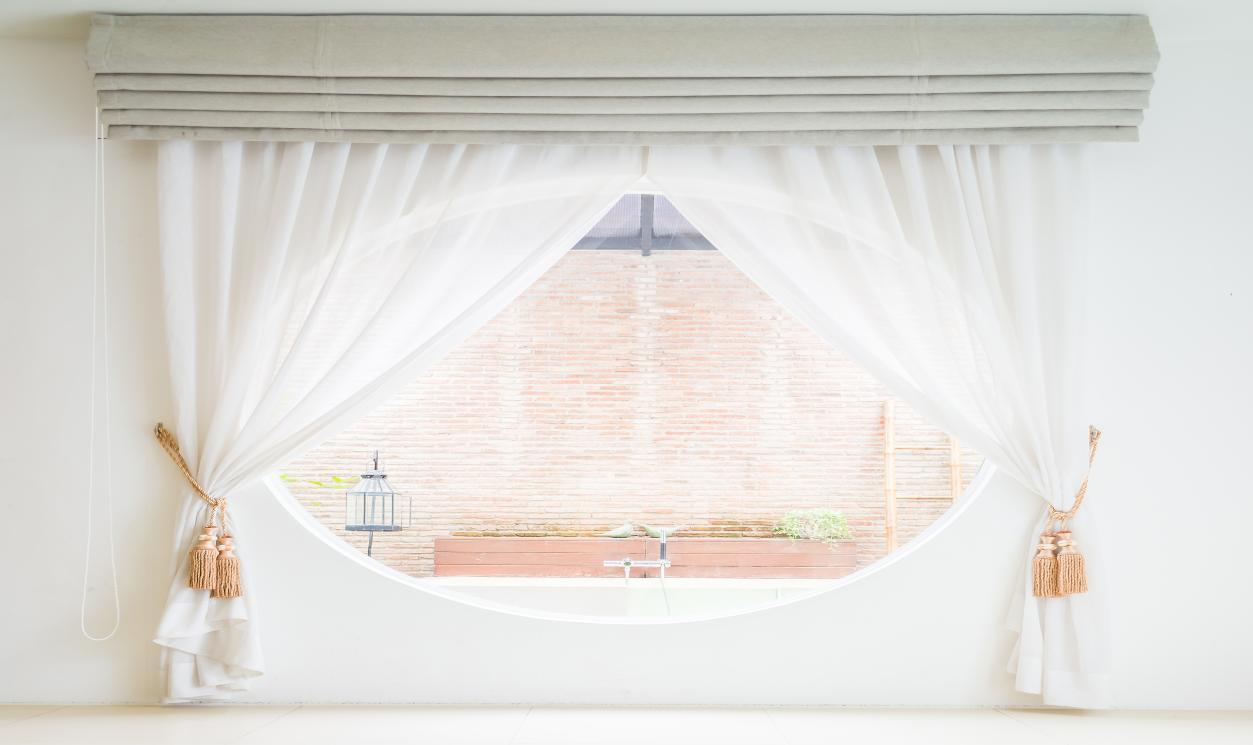At Blinds on Demand, we understand that your window coverings are more than just functional; they are a significant part of your home’s aesthetic. Maintaining and cleaning your blinds regularly not only enhances their appearance but also extends their lifespan. This guide offers practical advice to keep your blinds looking as splendid as the day they were installed.
- Key Takeaways:
- Tips and Best Practices for Maintaining and Cleaning Blinds
- Seasonal Adjustments for Blind Care
- Special Considerations for Different Types of Blinds
- Advanced Cleaning Techniques
- Protecting Your Blinds from Damage
- Advanced Techniques for Spotless Blinds
- For Fabric Blinds
- For Wooden Blinds
- For Metal and Vinyl Blinds
- Regular Upkeep to Avoid Major Repairs
- Seasonal Care Strategies
- Dealing with Common Problems
- Enhancing Blind Longevity with Protective Measures
- Cleaning Innovations and Tools
- Eco-Friendly Cleaning Solutions
- Conclusion
- FAQs
Key Takeaways:
- Regular Dusting: A simple weekly dusting can prevent major buildups.
- Immediate Action on Spills: Tackle stains quickly to avoid permanent marks.
- Consult Professionals: For deep cleans and maintenance, professional services can provide thorough care without the risk of damage.
Tips and Best Practices for Maintaining and Cleaning Blinds
Maintaining your window treatments involves more than just regular cleaning. Here are some best practices that can help keep your blinds in excellent condition:
- Create a Routine: Establishing a cleaning routine is essential. Set reminders to dust your blinds weekly and schedule deeper cleanings every few months. Consistency prevents the buildup of grime and dust, which can be harder to clean over time.
- Avoid Harsh Chemicals: Harsh chemicals can damage blind materials like fabric, wood, and even metal by corroding surfaces or fading colours. Always opt for mild, non-abrasive cleaners specially formulated for the type of blinds you have.
- Handle with Care: Blinds, especially those made from delicate materials like silk or thin plastic, need to be handled gently. Avoid pulling or stretching as this can cause permanent deformation or tearing.
Seasonal Adjustments for Blind Care
With the changing seasons, your blinds can accumulate different types of debris or be subject to varying environmental conditions:
- Spring and Summer: Pollen and dust can accumulate more frequently during these months. Increasing your dusting frequency can help mitigate this buildup.
- Autumn and Winter: Moisture and condensation can lead to mold or mildew, particularly on window treatments in damper rooms. Ensure your blinds are dry, and the room is well-ventilated.
Special Considerations for Different Types of Blinds
Each type of blind has specific needs based on its material and construction:
- Venetian Blinds: These require careful cleaning between each slat. A duster with multiple heads can make this task easier and more efficient.
- Roller Blinds: Be cautious with moisture; never roll them up when they’re still damp. This can cause mold and mildew, particularly on fabric blinds.
- Roman Blinds: These are prone to wrinkles. Use a steam cleaner to gently remove creases without having to dismantle them entirely.
Advanced Cleaning Techniques
For deep cleaning, it’s occasionally necessary to take down your blinds. This allows you to tackle every part thoroughly:
- Soaking: Metal and plastic blinds can benefit from soaking in a bathtub with a mild detergent solution to loosen dirt and debris. After soaking, rinse with clean water and wipe down every slat with a soft cloth.
- Ultrasonic Cleaning: This method is highly effective for all types of blinds, using high-frequency sound waves to clean. While this requires professional service, it’s worth considering for restoring blinds to a near-new condition.
Protecting Your Blinds from Damage
Prevention is better than cure, even when it comes to blinds:
- UV Protection: Treatments that offer UV protection can prevent fading and material degradation over time.
- Proper Installation: Ensure your blinds are installed correctly to avoid unnecessary wear from improper use. Consult with professionals like those at Blinds on Demand for installation to ensure longevity.
Advanced Techniques for Spotless Blinds
Cleaning your blinds thoroughly requires attention to detail and the right approach tailored to each type. Here are some specific methods to keep various types of blinds in top condition:
For Fabric Blinds
- Steam Cleaning: This is an excellent method for removing dirt and odors without removing the blinds. Ensure the fabric is steam-friendly to avoid damage.
- Dry Cleaning: Some fabric blinds might require professional dry cleaning, especially if they are made from delicate materials or are heavily soiled.
For Wooden Blinds
- Special Wood Cleaners: Use cleaners specifically designed for wood to avoid damaging the finish. Apply with a soft cloth and follow up with a dry polish to enhance the sheen.
- Avoid Water: Excess moisture can warp and stain wood, so use minimal water and ensure the blinds are thoroughly dried afterward.
For Metal and Vinyl Blinds
- Mild Detergent Solution: Dip a cloth into a mixture of water and mild detergent and gently wipe each slat. Rinse with a damp cloth dipped in clean water and dry with another clean cloth to prevent water spots.
Regular Upkeep to Avoid Major Repairs
Frequent, minor maintenance can prevent the need for extensive repairs down the line:
- Tightening and Adjustments: Regularly check and tighten any loose components, such as the adjustment rod or mounting brackets, to ensure smooth operation.
- Lubrication: Components like the track or rod may require occasional lubrication to keep them operating smoothly. Use a silicone-based spray for best results, avoiding oil-based products that can attract dust.
Seasonal Care Strategies
Adjusting your cleaning techniques with the changing seasons can protect your blinds from environmental factors:
- Spring: Focus on removing allergens like pollen that accumulate during the allergy season by using a vacuum with a HEPA filter.
- Summer: Protect blinds from fading due to prolonged exposure to sunlight by using window films or sheer curtains to diffuse intense UV rays.
- Fall: Prepare for increased indoor humidity as the weather cools by ensuring that rooms are well-ventilated to prevent mildew growth on your blinds.
- Winter: Increase indoor air circulation using humidifiers or dehumidifiers to manage condensation on windows, which can affect the blinds’ mechanisms and surfaces.
Dealing with Common Problems
Blinds are not immune to issues. Here are some tips for addressing common problems:
- Sagging Blinds: If your blinds begin to sag, it may be due to worn-out cords or uneven weight distribution. Replacing the cords or realigning the slats can often resolve this issue.
- Stuck Blinds: Blinds that won’t raise or lower properly might be tangled or off-track. Gently examine the cords and track to release any snags or reposition the blinds back into the track.
Enhancing Blind Longevity with Protective Measures
Taking steps to protect your blinds from everyday wear and tear will enhance their durability:
- Sun Damage: Consider applying a UV-protective coating to blinds exposed to direct sunlight to prevent fading and material breakdown.
- Handling: Educate all household members on the correct way to operate blinds, emphasising gentle handling to avoid unnecessary strain on cords and slats.
Cleaning Innovations and Tools
Embrace the latest in cleaning technology and tools to keep your blinds looking new:
- Magnetic Dusters: These tools attract dust and can be very effective for quickly cleaning metal blinds.
- Robot Vacuums with Soft Brushes: Some of the latest robot vacuums come with attachments designed for blinds, allowing for regular, automated cleaning that reduces the need for manual dusting.
Eco-Friendly Cleaning Solutions
In line with contemporary environmental concerns, consider using green cleaning solutions:
- Homemade Cleaners: Create a solution using vinegar and water for an effective, eco-friendly cleaning method. This mixture is particularly good for removing grease and grime without leaving harmful residues.
- Microfiber Cloths: Opt for high-quality microfiber cloths that effectively trap dust and particles without the need for chemical cleaners, reducing the ecological footprint of your cleaning practices.
Conclusion
Keeping your blinds pristine is simpler than it seems with the right care and techniques. Whether you’re dealing with light dust or more stubborn issues, there’s always a solution at hand. For detailed advice tailored to your specific blinds or for professional maintenance services, don’t hesitate to contact us at Blinds on Demand. We’re here to ensure that every window in your home looks its best!
FAQs
How often should I clean my blinds?
It’s best to dust weekly and perform a deep clean every six months.
Can I use regular detergents on my blinds?
Only mild detergents should be used, and only on certain types of blinds. Always check the manufacturer’s recommendations.
Is it safe to wash wooden blinds?
It is not recommended to wash wooden blinds with water. Use a dry or slightly damp cloth and a cleaner designed for wood.
How can I remove a stubborn stain from fabric blinds?
Spot clean with a mixture of mild detergent and warm water. Dab gently rather than rubbing the fabric.
What is the best method to dry blinds after washing?
Allow blinds to air dry completely before rehanging them. Do not fold or crumple them while wet.









